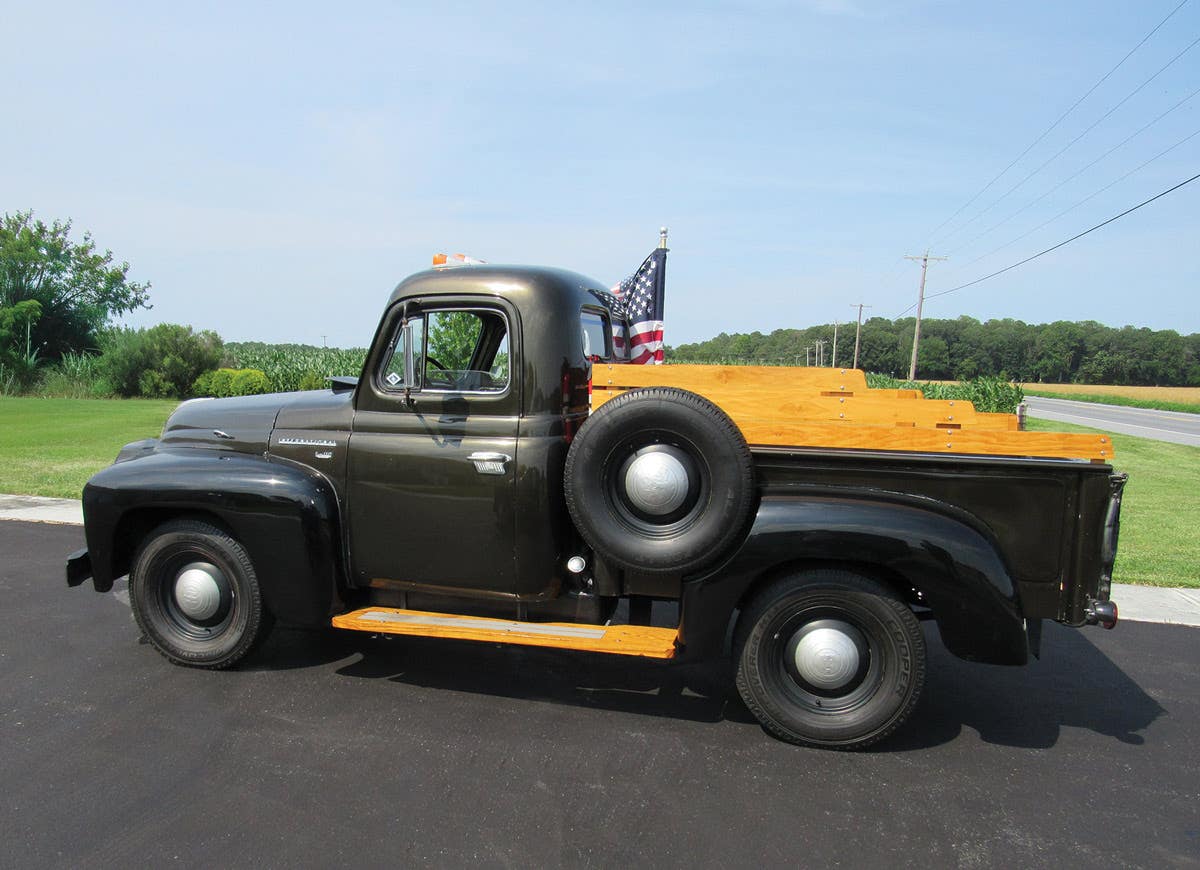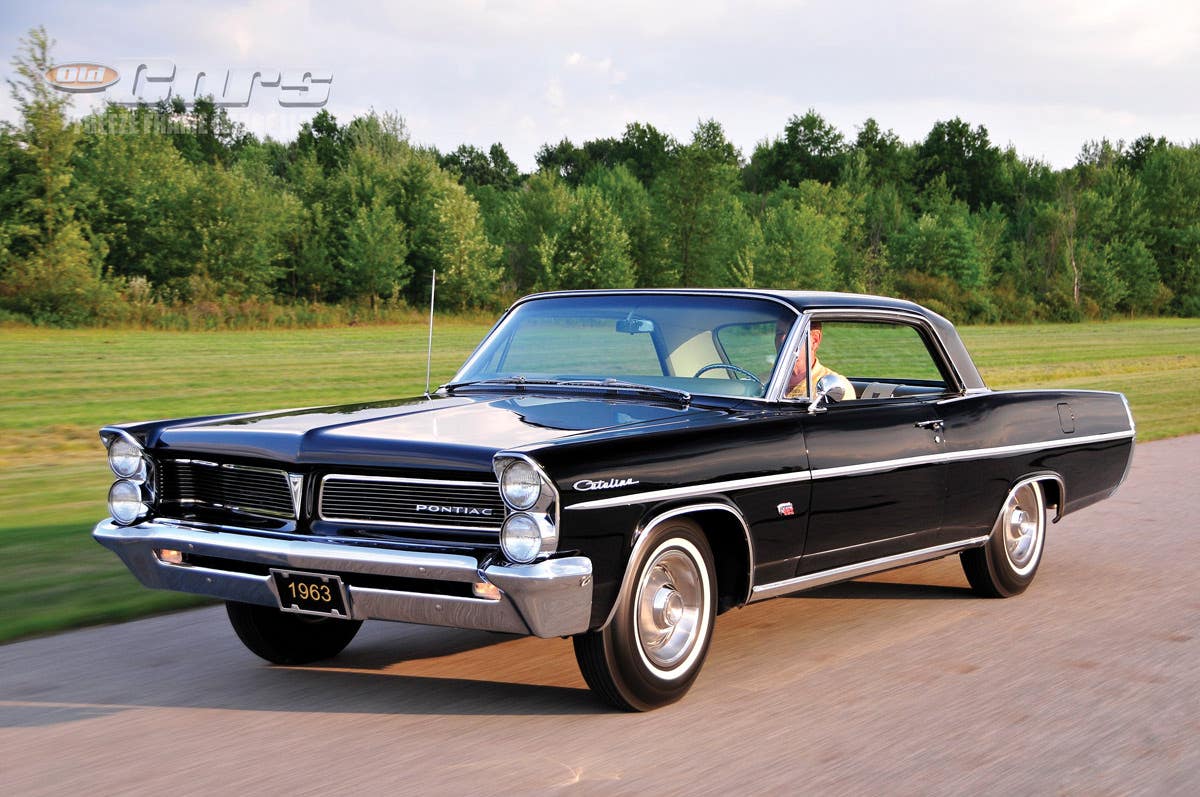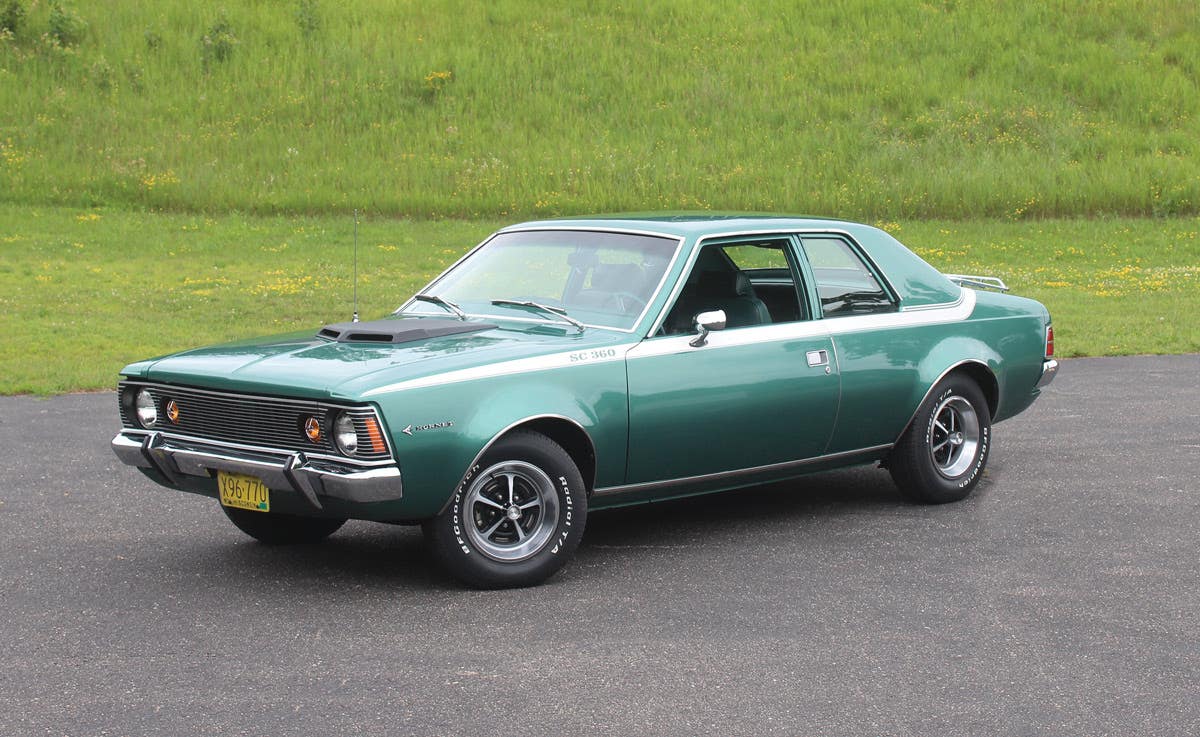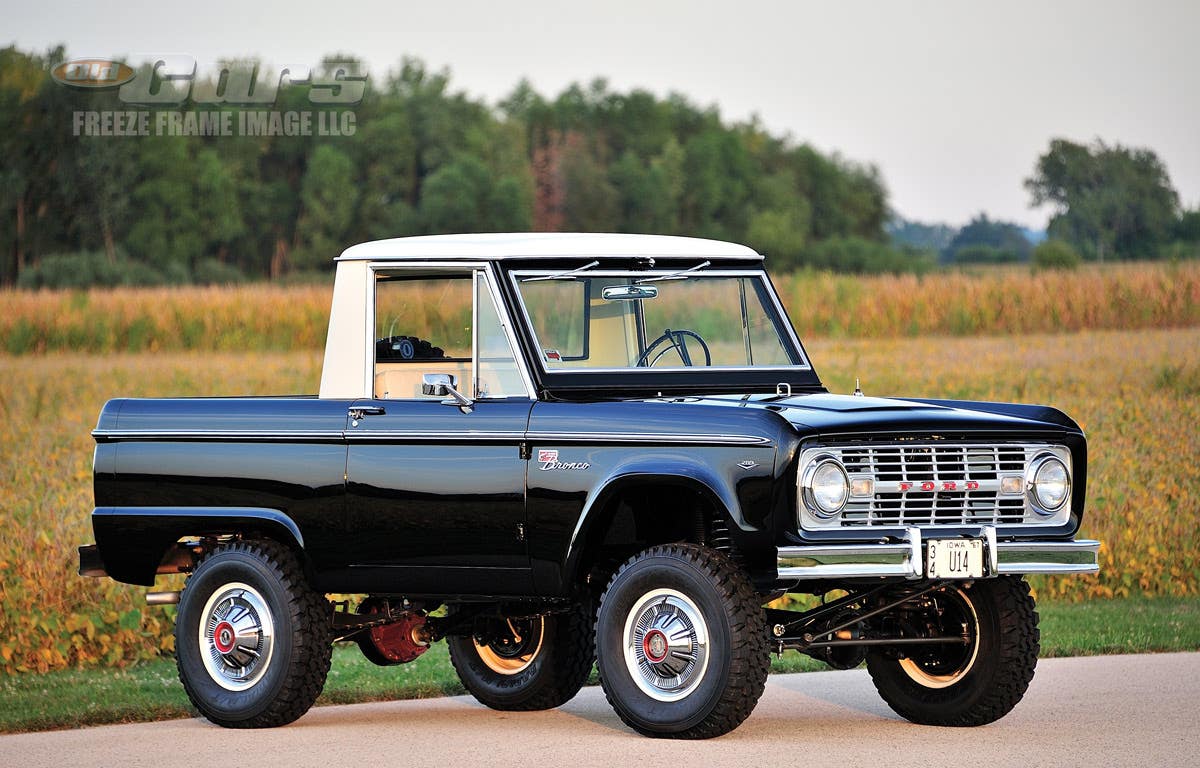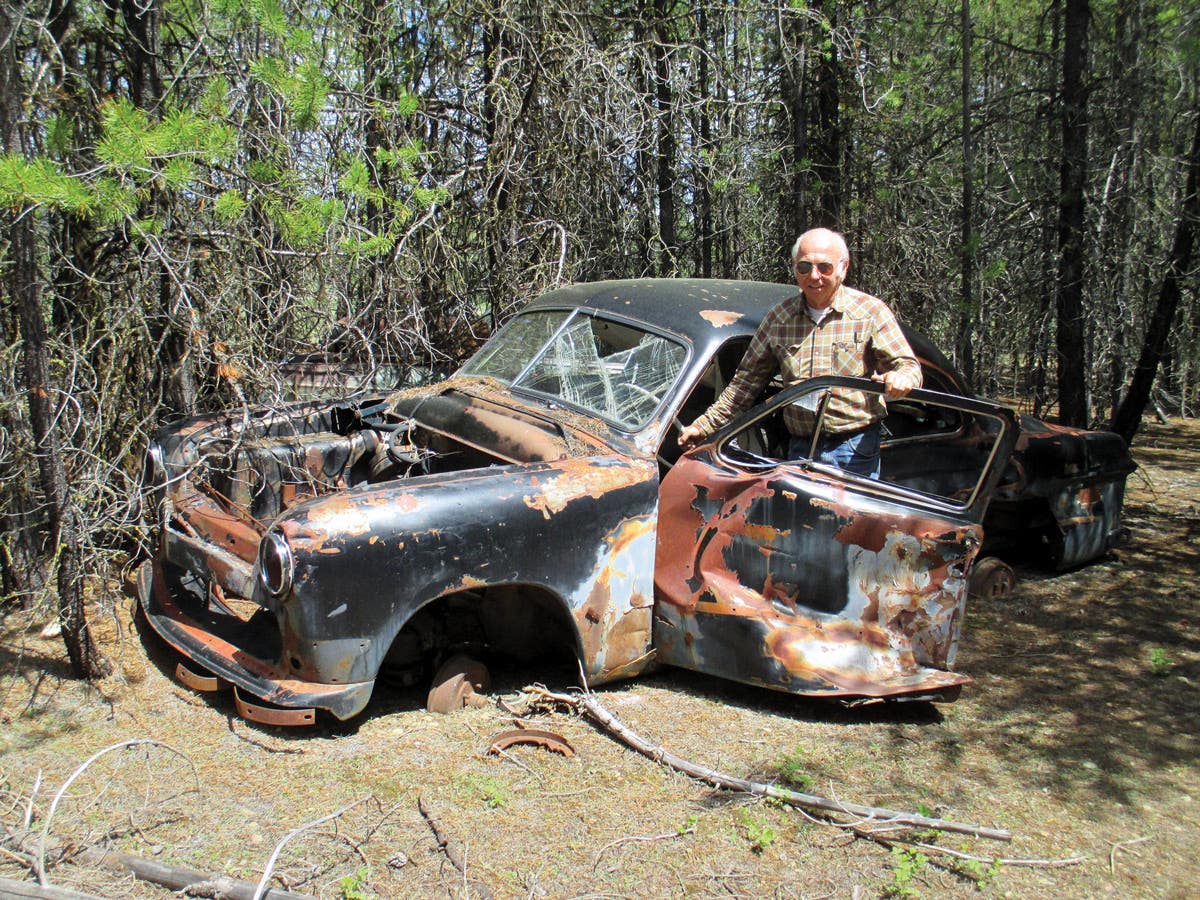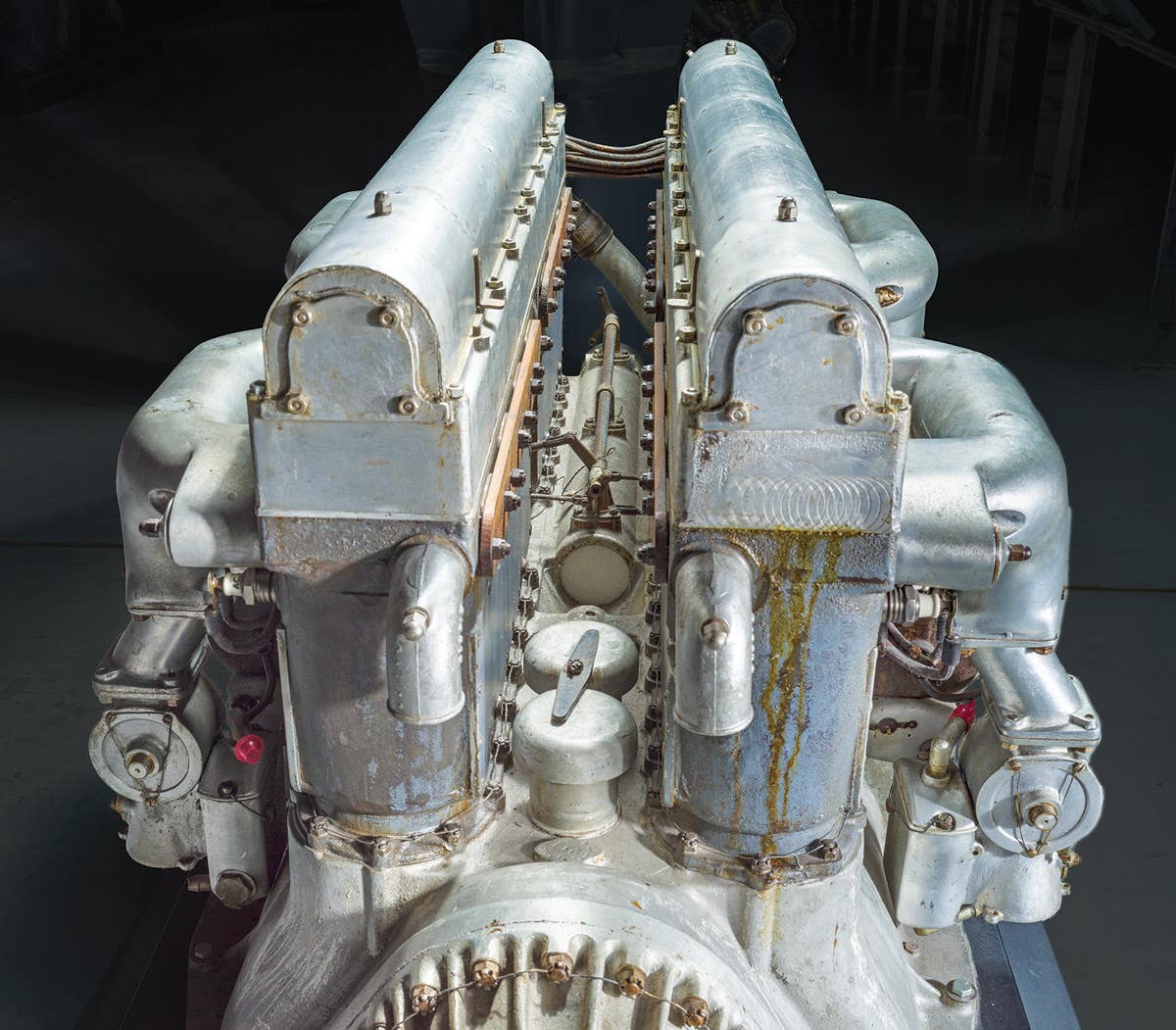Car of the Week: 1951 Frazer Vagabond
Kaiser-Frazer was unhampered by tradition when its cars began arriving in 1947, and while that fact mattered little in the end, it did allow for some freethinking.
Story and photos by Bob Tomaine
Kaiser-Frazer was unhampered by tradition when its cars began arriving in 1947, and while that fact mattered little in the end, it did allow for some freethinking.
Henry J. Kaiser and Joseph W. Frazer had established the company two years earlier. Kaiser was best known for the Liberty Ships he’d churned out during World War II; Frazer was a car man through and through, having worked everywhere from Willys to Packard before ending up at Graham-Paige. On paper, the two seemed a formidable team and naturally enough, such successful figures would name their cars after themselves. The Kaiser would be medium-priced while the Frazer would be the upscale version and initially a Graham-Paige product. An early ad explained that “Willow Run, world-famous war plant, will soon be serving the peacetime needs of two most vital industries, civilian transportation and agriculture. Within a few weeks, production will have commenced here on Graham-Paige’s great new Frazer motor car.”
Describing Willow Run as a “world-famous war plant” was anything but hyperbole. Ford had built it from scratch in 1941 to produce Consolidated Aircraft’s B-24 Liberator bomber. The 4.7 million-sq.-ft. operation that, at its peak, completed one B-24 per hour became available after the war, and Kaiser-Frazer jumped at the opportunity. Thinking big and intending to become a major player, it advertised that “only once in a decade comes a distinctly new trend in automobile styling. A trend so clearly in accord with public preference, it is only a matter of time until all manufacturers fall into line. The Kaiser Special and the Frazer, America’s first 1947 motor cars, have set a trend in body styling, passenger comfort and driver convenience that will be reflected in other automobiles in the years to come.”
K-F versus the competition
The two really were distinctly new. While the competition had resumedpostwar production by mildly updating prewar models, K-F had begun with a blank sheet because it hadn’t been around in prewar times. Elegant rather than ostentatious, the new cars were slabsided, clean, minimally trimmed and available only as four-door sedans. Under the hood, a 226-cid flathead six generated 100 hp in the base models and 112 hp in the Frazer Manhattan and the Kaiser Custom. Flatheads were fine in 1947, but in the Frazer, a six was another matter.
A four-door Lincoln offered the last American V-12 at $2554 in 1947 when the least expensive Cadillac four-door was the $2324 Series 61 with its flathead V-8. The entry-level Frazer sedan cost $2295 and if a driver was happy with a six, then a Packard Clipper four-door was a relative bargain at $1745. Those comparisons are fair, as advertising headlined “for those who can afford the ultimate — America’s newest fine car” explained that “the Frazer Manhattan is built for those who can afford the ultimate in personal transportation.” Setting its sights on Cadillac, Packard and Lincoln owners was a serious goal and the open-mindedness that accompanied Frazer’s lack of tradition apparently overlooked the connection between a high price and a big engine.
Still, the Frazer sold fairly well in the beginning. It was a good car and the sellers’ market helped, but there were problems. By 1949, the Frazer seemed dated among truly postwar cars. Cadillac now had a modern overhead-valve V-8, Lincoln had a flathead V-8, Packard had gone to all eights and yet Frazer continued with its six. It was now “the most distinguished value* in the luxury car field … the hand-crafted Frazer Manhattan. The Pride of Willow run.” The asterisk was telling: a footnote stated that the price had been “revised downward” to $2595, almost $200 below the Cadillac, but about $20 above the base Lincoln four-door and $50 more than the Packard.
Two utilitarian Kaiser-Frazers
Things were not going well at Kaiser-Frazer. Joseph Frazer soon left and the product line was shuffled. Among the new models were Kaiser’s basic Special Traveler and its better-finished Frazer Custom Vagabond. Essentially modified four-door sedans, the Special Traveler and Vagabond featured rear liftgates and dropgates that provided access to a cargo area expandable to 130 cubic feet by folding the rear seat. They were not only “cars that lead a double life,” but “the world’s most useful car” and in an ad showing one serving as an ambulance, “the car that answers a cry for help.” It was an excellent idea and while it was a reach to claim that the “Traveler obsoletes (the) conventional station wagon,” Kaiser could honestly state that “with the hinged rear panels closed, the Traveler looks just like a standard four-door sedan.”
K-F, though, just couldn’t win. A new body arrived for 1951 Kaisers, but Frazer was now on its way out and would have to make do with what it had. New front and rear clips gave the original body shell a completely different look. The previously staid and dignified design was now sleek, modern and a little bit flashy even as the new Frazer Vagabond. In Traveler form, Kaiser had shown it holding a pony and a bale of hay in one ad and a bear in another. It was “for farmers, small businessmen” … “salesmen, retailers … everyone who wants the prestige of owning a big, beautiful, luxurious sedan, but needs a car that can also earn its own way.” As a Frazer Vagabond, it was “for you … sportsman, estate owner or commuter.”
Still the Pride of Willow Run, “the Frazer Vagabond fills the needs of all who require a handsome sedan on one trip and a large-capacity carrier on the next. For merchant, farmer, technician or professional man, the Vagabond serves double use in transporting products or equipment. With its new Supersonic Engine (Hydra-Matic Drive optional at extra cost) and handcrafted quality, the Vagabond has the performance and value to make it the year’s smartest buy for smart people.” The automatic was new, the Supersonic Six bumped horsepower from 112 to 115 and the car was practical and undeniably attractive, but it was over.
Creative thinking had produced the Vagabond’s original design and it worked well enough with the updated front and rear sheet metal to produce about 2900 sales — one third of the 1951 Frazers. One Vegabond was sold in Port Byron, N.Y., and Bruce Green of Cato, N.Y., now owns it. He said that his father bought it around 1980 as a barn find.
Reviving a stalled project
“I don’t really know why he decided to buy it,” Green said, “but that was 1980 and I was maybe two or three years old at the time … When Dad got it, he towed it home and he said that the engine was seized and he had my uncle come and help him free up the engine. He drove it maybe two-tenths of a mile and said, ‘It needs a valve job.’ He tore the engine apart, put the head into the back of the car, put the car sideways in the back of the garage and it sat there from 1980 until 2009.”
His father had long planned to get the Frazer running, but until that happened, it sat on jackstands in the garage and as most cars do in such situations, became storage for anything that would fit. That ended when the engine came out to be rebuilt and not long after, the car was back on the road and Green’s father was enjoying it.
“During that one year,” Green explained, “he had it done enough to drive and he did take it out to a few shows before he passed … The first time I drove it would’ve been in early 2010. My father was in the hospital, getting treatments for leukemia and he said, ‘While I’m not there to worry about it, why don’t you go home and take the car out of the garage and teach yourself to drive on it?’ I’d driven a stick, I’d driven a tractor, I’d driven his (1947) Buick once, but I never really got out and just drove. That’s what I did. I backed this thing out and I just started driving it.”
By 2015, he was confident enough in the car to drive it to Gettysburg, Pa., for a Kaiser-Frazer Owners Club meet. While not quite “The Trip From Hell,” various fuel problems conspired against him on the 400-mile drive, but a replacement fuel pump bought at the meet plus some expertise from other owners got the car home with nothing worse than some minor vapor locking. After that, problems ranged from a broken motor mount to a broken wire and now Green knows that the Frazer is now ready for any run. More to the point, none of those difficulties changed his mind and he still likes the car that much.
“Yeah,” he said, “mostly because of the hatchback. It’s such an unusual vehicle. It gets a lot of attention … To me, it’s all about what they did when they customized this car. They customized it. It is factory, but they said that there are 200 changes that they made from just a Frazer Manhattan or Frazer standard (model) to make it into the Vagabond.”
Obviously, there are the hatch and the tailgate, but the left rear door doesn’t open because the spare tire is there. Wood skid-strips protect the trunk floor and the seat back flips to extend the floor, all of which show some wear because the original owner had used the Frazer to carry a boat on Adirondack camping trips. The exterior isn’t perfect, either, which leads to the question that every owner confronts. Restore it or drive it?
“I’ve got (other) cars,” Green said. “I’ve got an old house that needs restoration. It’s all about priorities.”
____________________
SHOW US YOUR WHEELS!
If you’ve got an old car you love, we want to hear about it. Email us at oldcars@aimmedia.com
__________________________



